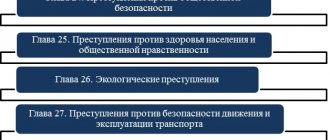Chapter 21 Crimes against property opens with Section 8 of the Criminal Code of the Russian Federation, dedicated to crimes in the economic sphere.
A criminal lawyer in Krasnogorsk will provide you or your relative with qualified legal assistance at all stages of criminal prosecution for crimes against property such as:
Article 158. Theft
Article 158.1. Petty theft committed by a person subject to administrative punishment
Article 159. Fraud
Article 159.1. Lending fraud
Article 159.2. Fraud in receiving payments
Article 159.3. Fraud using electronic means of payment
Article 159.4. Lost power
Article 159.5. Insurance Fraud
Article 159.6. Computer Fraud
Article 160. Misappropriation or embezzlement
Article 161. Robbery
Article 162. Robbery
Article 163. Extortion
Article 164. Theft of items of special value
Article 165. Causing property damage by deception or abuse of trust
Article 166. Wrongful seizure of a car or other vehicle without the purpose of theft
Article 167. Intentional destruction or damage to property
Article 168. Destruction or damage to property due to negligence
Crimes against property, they are also called property (selfish) crimes, are dominant, because the selfish motive and need are very strong and people often commit crimes both for the sake of profit and involuntarily, in order to satisfy their needs. The basis of most crimes against property is theft, that is, the gratuitous unlawful seizure of someone else's property, the conversion of property to one's own benefit, causing damage to the rightful owner of such property. Only the methods of theft differ in the various elements of crimes against property, so Art. 158 of the Criminal Code of the Russian Federation Theft forms part of the offense of secret theft, Art. 159 of the Criminal Code of the Russian Federation Fraud forms part of theft committed by deception or abuse of trust, Art. Art. 161 and 162 of the Criminal Code of the Russian Federation establish liability for open theft and theft by assault with the use of dangerous violence with the aim of committing it, respectively.
CRIMINAL LAWYER call now: ☎ 8 (495) 532-75-40
Distinctive features of types of theft
To determine the differences between theft and other property crimes, you need to know their signs and characteristics. The concept of theft is used for most property crimes, which involves the seizure of someone else's material assets, regardless of the method. A distinctive feature of theft is the taking of someone else's property, in which the process of taking it occurs secretly, and the owner knows nothing about what is happening.
Theft is the secret theft of material assets. During a crime classified as robbery, the victim knows that material assets belonging to him are being stolen. The victim sees the process of the crime and understands that his property is currently being stolen.
The main difference between robbery and theft is an open form of appropriation of material assets. A more serious type of robbery is robbery, which involves actual violence or voicing a threat of harm, life and health.
Classification of crimes against property
The issue of classification of crimes against property is debatable. Of course, there are classifications that do not cause controversy. Thus, depending on the form of guilt, intentional and careless attacks on property are distinguished. Following the criminal law, the vast majority of offenses are classified as intentional (Articles 158-167 of the Criminal Code of the Russian Federation); to the careless - only the crime provided for in Art. 168 of the Criminal Code of the Russian Federation. A.G. Bezverkhov proposed a classification of property crimes according to the nature and degree of public danger of the encroachment: crimes of minor gravity, moderate gravity, grave and especially grave.
It is traditional to classify crimes against property into groups depending on their motivational orientation. There are mercenary and non-mercenary attacks. So, A.I. Rarog believes that mercenary crimes are divided into two groups: theft (Articles 158-162, 164 of the Criminal Code of the Russian Federation) and other mercenary crimes (Articles 163, 165, 166 of the Criminal Code of the Russian Federation). Unselfish attacks, in his opinion, include Art. 167 and 168 of the Criminal Code of the Russian Federation. Almost the same position is held by Z.A. Neznamov and I.G. Solomonenko, who call a group of other mercenary crimes crimes not related to theft. The position of I.Ya. is also close to this. Kozachenko, stipulating the presence of:
- selfish attacks on property in the presence of signs of theft;
- encroachments on property in the absence of signs of theft;
- other encroachments on property.
However, by what criterion the third category of encroachments on property is distinguished remains unclear, although it can be assumed that we are talking about non-mercenary encroachments.
A.N. Ignatov, also adhering to the division of crimes against property into selfish and non-selfish, divided selfish crimes into violent (robbery, robbery) and non-violent (all others). The same division is made by G.N. Borzenkov (his classification of encroachments on property is discussed below), including among the divided crimes also extortion, which is classified as a violent crime.
S.A. Eliseev, without using the terms “selfish” and “non-selfish” attacks, singles out:
- crimes that entail a decrease in the scope of property possession of the victim, but are not accompanied by a corresponding increase in the possession of the perpetrator (deliberate and careless destruction of property);
- crimes entailing a decrease in the scope of property possession of the victim, accompanied by a corresponding increase in the possession of the perpetrator (all other crimes).
Recently, new classifications of crimes against property have appeared in criminal law science. So, A.G. Bezverkhov proposed a classification based on two criteria:
- ownership of property (in the form of things) to subjects of property rights or other owners;
- transfer of property (in the broad sense) from one participant in the specified relationship to another.
Guided by the above criteria, A.G. Bezverkhov says:
- about encroachments that are expressed in unlawful seizure and other unlawful taking of someone else’s property or destruction and damage to someone else’s property (theft, robbery, robbery, hijacking, intentional and careless destruction and damage to property);
- offenses consisting of unlawful evasion by the perpetrator of obligations to transfer property (from paying what is due) or unlawfully inducing the victim to transfer property or commit another action of a property nature (embezzlement, embezzlement, fraud and other damage by deception or using trust, extortion ).
Absence from the list of Art. 164 of the Criminal Code of the Russian Federation, the author explains that this crime “may be considered unnecessary due to the real possibility of ensuring counteraction to this encroachment by such means of criminal law as prohibitions on theft of other people’s property (Articles 158-162).”
N.G. Ivanov, taking into account the peculiarities of the objective side of acts, divides all crimes against property into theft and crimes that are not theft.
A.I. Depending on the subject of the attack, fighters are distinguished:
- crimes the subject of which are objects of property law, including money and securities (theft, fraud, misappropriation, embezzlement, robbery, robbery, theft of items of special value, intentional and careless destruction or damage to property);
- crimes, the subject of which may be any (in the broad sense of the word) property, including property rights, as well as other objects of civil rights, including works and services, information, results of intellectual activity, including exclusive rights to them (extortion, causing property damage by deception or breach of trust, theft).
According to A.V. Brilliantov and I.A. Klepitsky, in the system of property crimes (as they call crimes against property), depending on the type of these relations, one can distinguish:
- crimes against property in the narrow sense of the word (theft, robbery, robbery, misappropriation and embezzlement, theft, destruction and damage to property);
- crimes against property in general (fraud, extortion, causing property damage by deception or breach of trust).
However, more often in science all crimes against property are classified into three groups, usually without indicating the criterion used. So, they distinguish:
- theft (Articles 158-162, 164 of the Criminal Code of the Russian Federation);
- causing property or other damage not related to theft (Articles 163, 165, 166 of the Criminal Code of the Russian Federation);
- destruction or damage to property (Articles 167, 168 of the Criminal Code of the Russian Federation).
L.D. Gauchman says:
- about theft;
- about other types of unlawful taking or use of someone else’s property (Articles 163, 165, 166 of the Criminal Code of the Russian Federation);
- about destruction or damage to property.
Yu.I. Lyapunov called the second group of crimes crimes that cause (or may cause) property damage to property relations. V.P. Revin distinguishes theft (Articles 158-162, 164 of the Criminal Code of the Russian Federation), other mercenary attacks (Articles 163, 165, 166 of the Criminal Code of the Russian Federation) and non-mercenary attacks (Articles 167, 168 of the Criminal Code of the Russian Federation).
E.S. Tenchov believes that there are three sub-institutions of crimes against property:
- thefts encroaching on the entire set of property relations in the production or consumer and at the same time in the distribution spheres (Articles 158-162, 164 of the Criminal Code of the Russian Federation);
- crimes that are not theft, aimed at extracting property benefits (Articles 163, 165 of the Criminal Code of the Russian Federation), and encroaching on property in the distribution sector;
- criminal acts devoid of such an orientation, encroaching on property in the production or consumer spheres (Articles 166-168 of the Criminal Code of the Russian Federation).
A unique classification is proposed by G.N. Borzenkov:
- Acquisitive crimes related to the unlawful extraction of property benefits: theft of other people's property;
- crime related to theft: extortion (Article 163 of the Criminal Code of the Russian Federation);
- other mercenary crimes: causing property damage by deception or abuse of trust (Article 165 of the Criminal Code of the Russian Federation); unlawful taking of a car or other vehicle without the purpose of theft (Article 166 of the Criminal Code).
Without dwelling specifically on the disadvantages and advantages of the above classifications (for traditional classifications this has already been done more than once, see, for example, the works of S.M. Kochoi; as for the classification of A.G. Bezverkhov, it requires further understanding, although it immediately raises doubts about the possibility of scientific classification simultaneously according to several criteria), I note that the most correct and convincing classification of crimes against property, proposed at one time by S.M. Kochoi (now she has transformed, see below). He highlighted:
- Acquisitive crimes against property: theft (Articles 158-161, 164 of the Criminal Code of the Russian Federation);
- acquisitive crimes against property that do not contain signs of theft (Articles 162, 163, 165 of the Criminal Code of the Russian Federation).
- theft (Article 166 of the Criminal Code of the Russian Federation);
It is noteworthy that, dividing mercenary attacks into theft and crimes that do not contain signs of theft, S.M. Kochoi attributed robbery to the second subgroup. I think the author is absolutely right.
The modern legislative structure of robbery is in deep contradiction with the legislative definition of theft. An attack for the purpose of stealing someone else's property, combined with a certain physical or mental impact on the victim, is not equivalent to theft. Moreover, theft generally remains outside the scope of robbery. Therefore, there is no reason to consider robbery a form of theft. For this it would be necessary, as S.M. wrote. Kochoi, change the criminal law, formulating the composition of robbery as material. Until this happens, from the point of view of the purity of qualifications, it would be necessary to subject the fact of theft in the robbery to an independent assessment.
In this regard, a paradoxical situation is emerging in science. It is impossible not to notice that robbery has little in common with theft. However, from the interpretation of the letter of the law (in the note to Article 158 of the Criminal Code of the Russian Federation, for example, it speaks of theft and extortion and indicates Articles 158-164 of the Criminal Code of the Russian Federation) it follows that robbery is theft. And science is put in a situation where it has to explain this contradiction in order to “save the face” of the legislator. So, A.I. Rarog writes: “...The special structure of robbery, recognized as one of the forms of theft, forces us to make a reservation: robbery is a special form of theft, not associated with a violation of the right of ownership, but only pursuing the goal of stealing someone else’s property.” Perhaps the change in position of S.M. is connected precisely with the noted legislative awkwardness. Kochoi regarding robbery. In his latest work - the author's textbook - he already classifies robbery as theft, although I am sorry that he switched to this position.
S.M. is right Kochoi and in classifying theft as non-mercenary encroachment on property, contrary to the opposite and more widespread point of view in the literature. M.I. also consider hijacking a non-mercenary crime. Tretyak and R.Z. Abdulgaziev. Self-interest is not only a mandatory, but even a frequently occurring feature of this crime, although it undoubtedly violates the individual powers of the owner or legal possessor. A.V. Brilliantov and I.A. Klepitsky explains the mercenary nature of the theft this way: “The thief realizes that he is illegally temporarily using someone else’s thing, and this is a property benefit (renting a car costs money).” However, self-interest in encroachments on property, and in the Code in general, is mainly understood not as the extraction of benefits, but as the acquisition of something that did not exist.
Punishments for property crimes
There are different types of punishment for each type of property crime.
Theft
Committed theft without aggravating circumstances is punishable by the following types of punishment:
- A fine of no more than 80 thousand rubles.
- Imposing an obligation to pay an amount equal to the income received for 6 months.
- In case of repeated theft, restriction or complete imprisonment is imposed.
- Corrective labor for up to two years.
- Forced and compulsory work for a period of up to 360 hours.
- Imposition of a sanction in the form of arrest for up to 4 months.
Robbery
- A suspended sentence when committing a crime for the first time and without aggravating circumstances.
- Imposing an obligation to perform corrective labor for up to 480 hours.
- The maximum punishment for such a crime is 4 years of imprisonment in a penal colony or general regime.
Robbery
- The minimum punishment is forced labor for a period of up to five years.
- The most severe punishment is serving a sentence in a maximum security colony for up to 15 years.
- In addition to the actual sentence, a fine of up to 1 million rubles is imposed.
Property crime lawyer
The main role of a lawyer in cases of crimes against property is to establish the presence or absence of certain qualifying features in a crime, which can significantly influence the type and amount of punishment imposed by the court on the guilty person. An experienced lawyer for property (selfish) crimes will be able to understand all the intricacies of a criminal case under the articles of Chapter 21 of the Criminal Code of the Russian Federation.
The work of law enforcement agencies is aimed at investigating cases in a short time, so often many facts and details that could prove the suspect’s innocence are not taken into account. In addition, the suspect may be subjected to psychological pressure or illegal measures used to admit guilt. The actions of a lawyer for crimes against property will be aimed at including all the facts in the case file and at suppressing illegal methods of investigation.
Conditions for initiating a criminal case
The procedure for launching a criminal trial is established by the Code of Criminal Procedure, which consists of performing the following actions:
- A person who has suffered as a result of a crime applies to the relevant authorities with a statement regarding this fact.
- After receiving and registering the application, the victim is issued a coupon. The received document confirms the acceptance of the application for consideration.
- The official who received the application from the victim makes a decision within three days. Under certain circumstances, the time frame for consideration of an application may be increased to 30 days.
- If the fact of committing an illegal act is confirmed, the official draws up a corresponding order to launch a criminal case.
The resolution must indicate the following information:
- Place, time, date of launching the resolution to initiate criminal proceedings.
- Information about the official who initiated the criminal case.
- The basis for making such a decision.
- Link to legal norms.
A copy of the resolution is sent to the person who wrote the application.
Differences between theft and theft
The concept of theft includes various crimes in which the property of others is misappropriated. Theft is one such form that always occurs in a hidden form. The criminal who commits theft wants to remain undetected after completing the illegal act.
Other types of theft are committed publicly in the presence of the victim of the crime. Such crimes include robbery and robbery. Theft always takes place without the use of violence against the victim, and with robbery and robbery, actual violence against the victim or the threat of its use necessarily occurs.
What unites theft and embezzlement is the method of appropriating material assets, which implies the absence of the victim’s consent. When committing fraud, which is a form of theft, the victim is misled. Under the influence of attackers, the victim voluntarily transfers money to the attacker.
Have a question for a lawyer? Ask now, call and get a free consultation from leading lawyers in your city. We will answer your questions quickly and try to help with your specific case.
Telephone in Moscow and the Moscow region: +7
Phone in St. Petersburg and Leningrad region: +7
Free hotline throughout Russia: 8 (800) 301-39-20
Crimes against property not related to theft
. Causing property or other damage not related to theft. This group of crimes against property includes: extortion, i.e. the demand for the transfer of someone else’s property or the right to property or the commission of other actions of a property nature under the threat of violence or destruction or damage to someone else’s property, as well as under the threat of disseminating information disgracing the victim or him close or other information that may cause significant harm to the rights or legitimate interests of the victim or his relatives (Article 163 of the Criminal Code); causing property damage by deception or abuse of trust, i.e. causing property damage to the owner or other owner of property by deception or abuse of trust in the absence of signs of theft (Article 165 of the Criminal Code); unlawful taking of a car or other vehicle without the purpose of theft (Article 166 of the Criminal Code).
Extortion
- this is a demand for the transfer of someone else’s property or the right to property or the commission of other actions of a property nature under the threat of violence or destruction or damage to someone else’s property, as well as under the threat of disseminating information that disgraces the victim or his relatives, or other information that could cause significant harm to the rights or the legitimate interests of the victim or his relatives. It turns out that extortion is only a demand; the moment of completion of the crime in this case, from the moment of the demand, is postponed to the moment of the attempt. The actual taking of property is outside the scope of the provisions provided for in this article. Only if we are talking about extortion on a large scale, does appropriation matter, since this qualifying feature can only be imputed under the condition of the actual transfer of property on a large scale.
The demand for the transfer of property may be associated with the threat of violence, the threat of disseminating information disgracing the victim, or other information, for example, divulging the secret of adoption. Within the meaning of this article, “relatives” should be understood as any citizens whose life, health and well-being are dear to the victim.
This type of crime is committed with direct intent, its subjects are persons over the age of 16 years.
As in the case of violent robbery and robbery, in the case of extortion, the offender attempts to take possession of someone else's property using violence or the threat of such violence. However, during extortion, the victim retains the opportunity to turn to the authorities to protect his interests, i.e., during extortion, there is a gap in time between the demand for the transfer of property and the actual seizure of property, between violence and receipt of property. The victim can use this gap in time to protect his rights and interests.
Causing property damage by deception or breach of trust.
This composition is very similar to fraud. The criminal here does not take a penny, but does not, for example, give the organization the opportunity to receive from clients what it is owed for services; the culprit does not provide the opportunity to implement the function of replenishing property. For example, the inheritance was supposed to go to the state, but the acquaintances of a single woman decided to deceive the state, said that they had been dependent on the woman without an heir for the last few years, and received the property. The Supreme Court of the Russian Federation qualified this case precisely under Art. 165 of the Criminal Code.
A distinctive feature of this composition is also that the damage caused to the owner as a result of deception or abuse of trust includes not only direct losses in the form of non-receipt of certain funds or property, but also lost profits and other costs resulting from these actions. As for the qualifying circumstances, they are identical to the circumstances discussed above in relation to theft. Infliction of property damage by deception or abuse of trust is considered repeated if it was preceded by theft, robbery, etc. The exception here is cases of causing major damage. This circumstance does not coincide with the qualification of theft on a large scale, since it includes not only direct material losses of the owner, but also losses in the form of lost profits.
Wrongful taking of a car or other means of transport without the purpose of theft.
Previously, this crime was called theft. When there were no cars (or few of them), there were no corresponding articles in the Criminal Code. Isolated cases of theft were classified as malicious hooliganism. This article causes criticism from the owners who suffered. Unlike theft, the offender in this crime does not pursue the goal of converting stolen vehicles into his own property or the property of others. Therefore, if it is not proven that the culprit wanted to somehow dispose of the car, then only Art. 166 of the Criminal Code and, accordingly, not too severe, in the opinion of the victims, the punishment. The purpose of the theft may be indicated by the existence of an agreement with the buyer or the systematic nature of the actions (for example, the criminal has already stolen several cars). The theft can be carried out secretly, the owner can be pulled out of the car under threat - in this case the theft can resemble a robbery. These elements can be differentiated in the same way as during robbery, i.e., according to the severity of the violence. The crime is considered completed from the moment the vehicle is moved from its permanent location.
12. Concept and general characteristics of crimes in the field of economic activity.
Distinctive characteristics of theft and embezzlement
| Theft | Theft |
| It is a type of theft and implies a certain illegal act. | Includes a whole range of property crimes |
| Happens secretly | Can take place in hidden and open form |
| Occurs without causing harm to the victim’s health | Violence or threat of violence is used |
| The owner of the property does not know about the theft of his property | As a result of the use of violence, under its threat or misleading, the victim gives his material assets to the attacker |
| The most severe punishment is 10 years in prison | The maximum sentence imposed on an attacker is 15 years. |
Raider seizure - article of the Criminal Code of the Russian Federation
Raiding in the Criminal Code of the Russian Federation is not enshrined in a separate article as a crime, but more than 10 different articles provide for liability for certain actions of illegal seizure of property. The most common article that is used in practice when qualifying the actions of raiders is Article 159 of the Criminal Code of the Russian Federation (fraud); The very disposition of this article, which provides for liability for the theft of someone else’s property through deception or abuse of trust, fully covers the actions of attackers to take over someone else’s business. In addition to this article, the actions of raiders are often qualified under the following articles of the Criminal Code of the Russian Federation (in combination with Article 159 or separately from it):
- 179 of the Criminal Code of the Russian Federation, if the raider forces the owner of the organization to enter into a transaction for the alienation of property under the threat of violence;
- 170.1 - in cases where knowingly false data is submitted to the registration authority in order to enter false information into the Unified State Register of Legal Entities, the securities register or the depository accounting system;
- 170 - in relation to officials who register obviously illegal transactions, distorting information from the Unified State Register of Legal Entities and the state cadastre;
- 173.1 and 173.2 - when used in the process of capturing shell companies and dummies;
- 183 - in case of illegal receipt of information constituting commercial, tax or banking secrets;
- 185.5 - falsification of a decision of the general meeting or board of directors of the company;
- 186 - regarding the production and sale of securities;
- 196 and 197 - deliberate and fictitious bankruptcy;
- 303 - falsification of evidence - when submitting forged documents to the court in order to obtain an unjust act;
- 327 - forgery of documents;
- Part 3 Art. 299 - illegal initiation of a criminal case in order to obstruct business activities.
The above list is incomplete; depending on the specific circumstances of the case and the schemes used, the investigative authorities can qualify the actions of raiders and their accomplices who commit related socially dangerous acts in the process of seizing property, under other articles of the Criminal Code of the Russian Federation, providing for liability for tax and other crimes in the economic sphere activities, crimes against property and malfeasance, crimes against justice, as well as against the life and health of citizens.
Deputies and senators of the Federal Assembly of the Russian Federation have repeatedly proposed to include in the Criminal Code of the Russian Federation Article 159.7 of the Criminal Code of the Russian Federation, which provides for liability directly for raider seizure, and the punishment was proposed to be severe - up to 20 years in prison with confiscation of property. It seems that due to the prevalence of this act and its increased social danger, such proposals are completely justified; As we noted above, the current version of the disposition of Article 159 of the Criminal Code of the Russian Federation fully covers the actions of offenders to seize someone else's property, and therefore there is no need to introduce a separate article into the code providing for liability for raiding. Meanwhile, the sanction of part 4 of Art. 159 of the Criminal Code of the Russian Federation, according to which raiders are held accountable, provides for a maximum penalty of imprisonment for up to 10 years, classifying these crimes as serious. Introduction of a separate part in Art. 159 of the Criminal Code of the Russian Federation in relation to raiders would make it possible to distinguish this act as a type of fraud, providing for increased liability for committing such acts and classifying them as especially serious crimes. All this would contribute to maintaining the harmony of the criminal legislation system, would facilitate the practical application of the article in this part, and would also contribute to a more complete implementation of the preventive function of the criminal law.
If a new part of Art. 159 of the Criminal Code of the Russian Federation, it would be quite logical to classify the investigation of criminal cases of this category as the jurisdiction of investigators of the Investigative Committee of the Russian Federation, which includes the bulk of crimes in the field of economic activity; this, in our opinion, would have a positive impact both on the quality of the investigation and on the elimination of disputes about jurisdiction and compliance with deadlines when conducting verifications of reports of raider takeovers.
Problems of determining theft, robbery and robbery
The Criminal Code of the Russian Federation contains an exact list of all the signs of robbery and robbery. Problems in determining a crime may arise if there is insufficient information obtained as a result of investigative measures and inquiries. If the circumstances of the crime have not been accurately reconstructed, the prosecutor may incorrectly classify the type of theft.
Such misconceptions can lead to the following negative consequences:
- Imposing a more severe punishment for a crime that the accused did not commit.
- Difficulties in determining the motives for a crime.
- Problems with evidence of crime.
Definitions and examples of theft
Theft is a crime of stealing someone else's material assets and property, which the attacker commits secretly. The act is carried out in the absence of the owner and third parties who have nothing to do with the stolen property.
There are some exceptions to the established rules. For example, if an attacker, while committing the theft of property, was noticed by the owner of material assets or other persons, but the criminal thinks that no one knows about the theft, such an act will be considered theft. External surveillance cameras can become witnesses to such a theft.
Another case where the crime will be considered theft is the case of theft of material assets in the presence of other persons, but they are not aware of the theft taking place. An example of such a crime is a situation where, posing as a restorer, an attacker takes a painting under the guise of the need to carry out restoration work.
General characteristics of crimes against property (Chapter 21 of the Criminal Code of the Russian Federation).
Crimes against property include socially dangerous acts that violate the rights of ownership, use and disposal of the owner of property or otherwise cause (or threaten to cause) property damage to the owner.
The specific object of crimes against property is social property relations (ownership, use and disposal of property) and the right to legal ownership of property.
The subject of crimes against property are any physical objects, any property that is not excluded from general civil circulation and has a consumer value (price).
Excluded from general civil circulation:
a) objects, objects and property that are only state property, for example, the diamond and currency funds of Russia, historical and cultural values of a national nature, etc.;
b) items withdrawn from general circulation due to their danger to others, for example, radioactive, highly toxic substances and narcotic drugs;
c) objects, objects and property related only to municipal property, for example, funds from the municipal budget, municipal enterprises, etc.
The objective side of crimes against property is characterized by active actions. Exception - Art. 168 (careless destruction or damage to property).
Most crimes have a material component. The exception is robbery, extortion and theft, which have a formal (truncated) composition.
The subject of crimes can be natural, sane persons who have reached the age of 14 or 16 years.
The subjective side of most crimes against property are characterized by guilt in the form of direct intent. Exception – Art. 167, 168 (destruction or damage to someone else’s property can be committed with direct or indirect intent, or through frivolity or negligence).
The obligatory features of most crimes against property are a selfish motive and the goal of extracting illegal profit.
Classification (depending on the direct object, method and motive):
ü theft - theft (Article 158 of the Criminal Code), fraud (Article 159-159.6 of the Criminal Code), misappropriation or embezzlement (Article 160 of the Criminal Code), robbery (Article 161 of the Criminal Code), robbery (Article 162 of the Criminal Code), theft of objects having special value (Article 164 of the Criminal Code);
ü other mercenary attacks - extortion (Article 163 of the Criminal Code), causing property damage by deception or abuse of trust (Article 165 of the Criminal Code), unlawful taking of a car or other vehicle without the purpose of theft (Article 166 of the Criminal Code);
ü non-mercenary attacks - intentional destruction or damage to property (Article 167 of the Criminal Code), destruction or damage to property through negligence (Article 168 of the Criminal Code).
Definition and examples of robbery
Robbery occurs openly, in the presence of people who are aware and understand the illegality of the action taking place. The qualification of the crime is not affected by whether the witnesses to the crime made attempts to prevent the theft or not; in any case, it will be defined as robbery.
The main difference between robbery and robbery is the absence of violent actions or voicing a threat of harm to the health of the victim.
An example of such a crime is a case where an attacker planned to steal products from a store, but was caught by a security guard, and then ran away with the stolen products. Such an act would qualify as robbery. If an attacker caused harm to the life and health of a security guard or verbally voiced similar threats, the crime will be classified as robbery.
Another example of a robbery is when an attacker, while attempting to steal material assets, threatened the victim with a weapon, but received a rebuff from the victim or other persons without having time to cause harm. The determining factor for reclassifying robbery as robbery is the presence of a threat of possible use of violence against the victim.
Definition and examples of robbery
Robbery includes crimes in which the theft of other people's material assets occurs in public, with the use of gross physical force or an open demonstration of threat against the victim. The main difference between a crime classified as robbery is the use of violence, which poses a real threat to the life and health of the victim.
The use of objects or weapons hazardous to health is not a mandatory sign of robbery.
Violent actions can be exerted both on the owner of material assets and on eyewitnesses of the crime. The following circumstances are aggravating:
- Committing a crime by a group of criminals.
- Large-scale damage was caused.
- The robbery occurred with illegal entry into the premises.
- Serious bodily harm was caused to the victim or witnesses.
An example of robbery would be a situation where an attacker on the street, in the presence of other people, attacked a man, stabbed him with a knife, and then took his wallet.
Administration of the city of Sorsk
Property is the economic basis of society. Property crimes make up the main share in the structure of crime in Russia. The direct object of property crimes is a specific property relationship with its inherent specific participants (individuals and legal entities, the state, municipalities), the content and subject of the property offense.
Most of them are thefts, robberies, car thefts and fraud.
Moreover, the circumstances under which these crimes are committed are very often characteristic. As a rule, thefts are committed either while drinking alcohol together. In such situations, it is doubly difficult to find the culprit.
The Department of the Ministry of Internal Affairs of Russia for the city of Sorsk warns that excessive consumption of alcoholic beverages can turn a citizen into a victim of a crime or push him to rash actions. Analysis of property crimes shows that most thefts and robberies occur mainly when the victim is intoxicated while drinking alcohol with strangers or strangers, when control over what is happening is weakened. As a rule, the objects of theft are cell phones, cash, and gold items.
We must not lose sight of the crimes committed by the so-called “burglars” - these are thefts with illegal entry into a home. As a rule, they are committed by persons without a fixed place of residence, as well as drug-addicted citizens, which makes this type of crime more daring and dangerous for people. It is impossible to avoid troubles, but each of us can protect ourselves as much as possible from them.
The Department of the Ministry of Internal Affairs of Russia for the city of Sorsk recommends taking a set of measures that will prevent burglary. The first and, perhaps, most important thing is not to tell neighbors, colleagues and other strangers about the presence of large sums of money, jewelry or any valuable items in the house. Do not leave correspondence in the mailbox for a long time; analyze strange visits from strange people and constant calls to your home phone; equip the front door with two locks of different systems; install bars on the windows of apartments located on the first, second and last floors, or stick a transparent polymer film on the glass, which is unlikely to be broken by intruders.
However, it is most reliable to equip your home with a security alarm with output to the centralized monitoring console of private security units. As practice shows, burglars usually avoid such apartments and give preference to those where no tangible threat awaits them. Centralized security today is the most effective measure to prevent property crimes.
Very often, criminals take advantage of the inattentive and sometimes even negligent attitude of citizens towards the safety of their property. Analysis of criminal cases for these types of crimes indicates that citizens are careless about storing their property, choosing the entrances of residential buildings, open areas, etc. as storage places.
Unfortunately, another category of crimes also continues to remain relevant, causing wide public outcry. These are frauds and so-called thefts “on trust”. As a rule, they are committed by criminals under the guise of social protection or welfare workers, charitable organizations, etc. In most cases, crimes occur against lonely, elderly citizens, who are very often unable to promptly contact law enforcement agencies and describe the signs of the persons who committed the crime against them, and subsequently identify them.
As you know, it is easier to prevent any crime than to solve it later. In this regard, the Department of the Ministry of Internal Affairs of Russia for the city of Sorsk draws the attention of citizens to the fact that the prevention of property crimes depends not only on the direct work of law enforcement officers, but also to a large extent on the vigilance of the owners themselves.
To protect your property from theft, you need to follow some simple rules:
- do not keep your phones, money and valuables in outside pockets;
- do not display mobile phones and the contents of your wallets in public places;
- do not bring unfamiliar people into your home;
- if you go to an entertainment establishment, then take a minimum of cash with you and be more careful about valuables;
— do not leave your car unlocked, even if you go out for a short time.
Of course, there are no universal tips on how to avoid criminal attacks. If a crime has been committed against you, do not try to figure it out on your own and do not put off contacting the police until later, since the sooner a crime is reported, the greater the chances of returning the stolen property.
Senior Investigator
Department of the Ministry of Internal Affairs of Russia for the city of Sorsk
Major of Justice A.F. Rozhitsky









